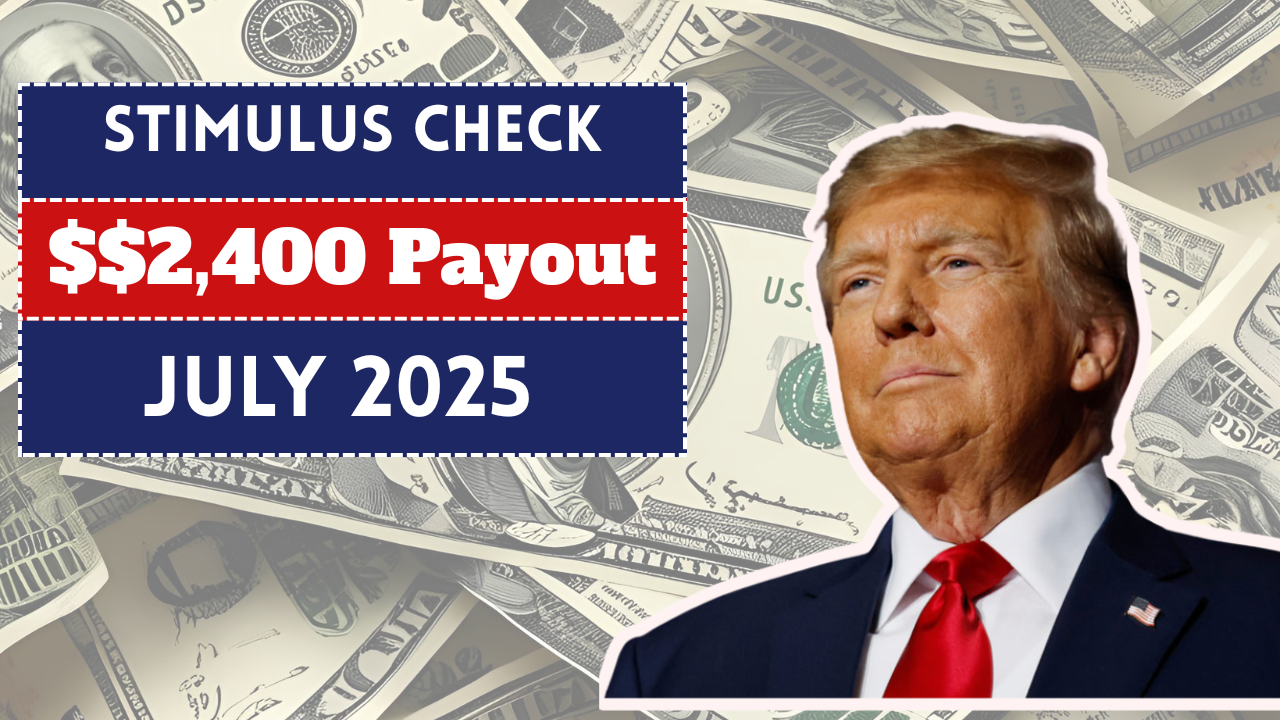In 2025, millions of Americans may receive a much-needed $2,400 stimulus payment, as the IRS prepares for another round of economic relief. Designed to help households facing inflation and economic uncertainty, this new financial boost could offer a significant lifeline — but who’s eligible, and how do you make sure you don’t miss out?
Here’s everything you need to know about the IRS $2,400 stimulus update for 2025.
At a Glance
| Payment Amount | $2,400 (one-time stimulus) |
|---|---|
| Eligible Individuals | Low-to-middle income taxpayers, seniors, veterans, parents |
| Distribution Agency | Internal Revenue Service (IRS) |
| Application Required? | No, if you filed taxes recently |
| Expected Timeline | Mid-to-late 2025 (official date pending) |
Why the $2,400 Stimulus Is Being Introduced
With inflation still affecting everyday expenses like housing, food, and healthcare, lawmakers have pushed for a fourth round of direct relief payments. This proposed $2,400 payment is meant to ease financial stress for vulnerable individuals, especially seniors, veterans, low-income earners, and families.
Although not officially part of a COVID relief bill, this initiative is seen as a continuation of the government’s efforts to provide targeted support during periods of economic hardship.
Who Is Eligible for the $2,400 Stimulus Payment?
Eligibility will depend on income level, filing status, and specific benefit categories. You may qualify if you meet any of the following:
✅ Primary Eligibility Criteria:
- Earned less than $75,000 as a single filer in your most recent tax return
- Earned less than $150,000 as a married couple filing jointly
- Receive Social Security, SSDI, SSI, or VA benefits
- Have dependent children (may receive additional amounts)
- Filed a 2023 or 2024 tax return with direct deposit details on file
Higher earners may still receive a reduced payment, depending on IRS phase-out thresholds.
How Will the IRS Deliver the Payment?
Just like in previous stimulus rounds, payments will be made through:
- Direct deposit (for taxpayers with banking info on file)
- Mailed paper checks
- Prepaid debit cards (for some recipients without direct deposit)
No formal application is needed if you’ve already filed your taxes. The IRS will use your most recent return to determine eligibility and issue the payment.
What If You Don’t File Taxes?
You may still qualify for the stimulus if you receive:
- Social Security
- Supplemental Security Income (SSI)
- VA benefits
The IRS will coordinate with the Social Security Administration and VA to send payments directly to eligible non-filers using existing records. However, it’s strongly recommended that non-filers use the IRS Free File tool or update their info to avoid delays.
How to Claim Your $2,400 Stimulus If You Haven’t Filed
If you haven’t filed a recent return or your details have changed:
- Visit IRS.gov and use the Free File system
- Enter or update your income, dependents, and banking information
- Submit your 2023 or 2024 tax return to be automatically considered for the payment
Filing ensures the IRS has accurate data to calculate and deliver your check on time.
Common FAQs
💬 Will the payment affect my taxes?
No. This stimulus check is a tax-free payment and will not be counted as taxable income.
💬 Can I still receive the payment if I owe taxes?
Yes. The IRS will not withhold this payment for tax debt or unpaid government obligations.
💬 When will I get the payment?
The IRS has not confirmed an exact date, but mid-to-late 2025 is the projected window. Updates will be posted on the IRS website.
Final Thoughts
The proposed $2,400 IRS stimulus payment could bring meaningful relief to millions of Americans still recovering from economic strain. If you think you may be eligible, now’s the time to file or update your tax return, check your banking details, and stay alert to IRS announcements.
For more updates, visit IRS.gov or subscribe to alerts through trusted financial news outlets.

